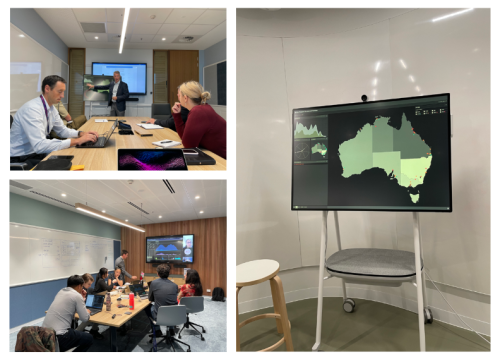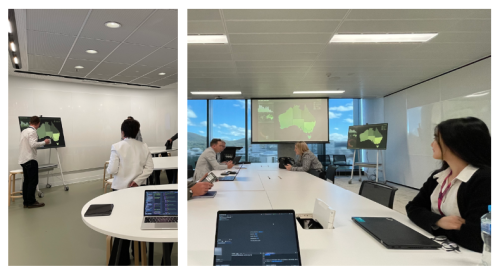KPMG acknowledges Aboriginal and Torres Strait Islander peoples as the First Peoples of Australia. We pay our respects to Elders past, present and
future. Our aim is to build a future where all Australians – Indigenous and non-Indigenous – are united by our shared past, present, future and humanity.
Project Summary
Army Headquarters engaged KPMG to develop a strategic Land Force Estate Plan (LFEP) to manage Army’s facilities and training areas. This plan was to
be supported by a Decision Support Tool (DST) which would enable Army Headquarters to collate, understand and track its estate. With this visibility,
Army would improve its management of an estate and infrastructure portfolio and make better estate and infrastructure decisions which affect its capability.
The DST would require innovation and creativity to draw on multiple (and disparate) data sets and information systems across Defence.
No real data has been used for this presentation.
2.1 The Problem
Defence’s estate is complex and diverse. To put this into context, the estate supports the activities of over 90,000 people across all states and territories in Australia. This includes approximately 394 properties (including 72 major bases), 25,000 assets and stewardship over three million hectares of land embracing five world heritage areas.
With a gross replacement value of around $64 billion, Defence’s estate and infrastructure is one of the largest real estate portfolios in Australia. The nature of the Defence estate is as varied as its size and breadth across Australia. It consists of training areas (often rich in biodiversity values), command headquarters, airfields, living accommodation, multi-user depots, warehouses and explosive ordnance storehouses, and training, education, research and testing facilities, as well as office buildings.
Defence has recently introduced a One Estate Framework. Pilot testing across four sites was able to prove that the One Estate Framework processes and tools are functionally adequate; however, the lack of data and clarity of information (present on all sites to different degrees) impacted both the confidence in the outputs and the
ability to consolidate sufficient data to support effective base level planning and investment modelling.
As an estate user, Army’s leaders did not have:
- adequate information to understand the areas of surplus and deficit within the Army Estate,
- a basis to make well informed needs assessments for Training Areas and capability, or
- a simple way to interrogate system data and synchronise requirements with other estate stakeholders in Defence.
This shortfall has resulted in inefficiencies and lost opportunity.
2.2 Project objective and scope
The team was firstly required to consolidate much of Army’s infrastructure requirements and priorities to understand the assets which are of most importance to Army’s capabilities. From this, the DST was to enable the analysis of near, medium and long term facilities, infrastructure, and training area requirements in a
consistent and repeatable manner. Army required the DST solution to be hosted on Defence’s network, and that it could integrated be with other systems.
2.3 Best practice asset management principles
The asset management strategy methodology incorporates the best practice principles of:
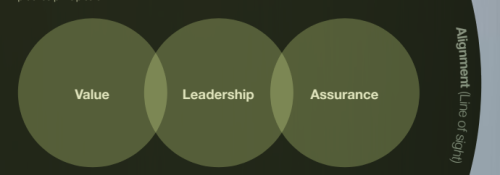
2.3.1 Value
From the outset, the project team members were required to understand the nuances of Army (and Defence) Asset Management. Infrastructure such as bases, ports, airfields, training areas and logistics facilities underpin the ADF’s ability to prepare for, conduct and sustain military operations including in response to disasters. Most importantly, the team learned to recognise that the armed forces do not derive monetary value or profit from their key assets.
In the context of defence, an asset’s value is derived by its contribution to the Defence Force’s capability. Learning from experienced team members, our junior team were able to quickly recognise the Army’s ‘capability’ requirements and comprehend how, for example, an obscure or remote facility could be of great strategic importance (and value) to Army. With a Defence Security and Estate budget of over $6.6 billion, understanding value in the context of Army was crucial to keep the team
focused on the most important asset classes.
2.3.2 Leadership
The project team also quickly identified that leadership buy-in would be critical to success. To be effective, the DST would need to manage, link and analyse information and data from multiple sources across the organisation. Strong leadership was instrumental in gaining access to these data sources across Defence. With such poor ‘line-of-sight’ across the asset base, the project team was also faced with an inordinate number of functional requirements. The team worked closely with client leadership to establish a clear strategy and delivery plan to address Army’s most important needs first. Below is a one page snapshot of the Strategy and 18 month road-map developed with the leadership team.
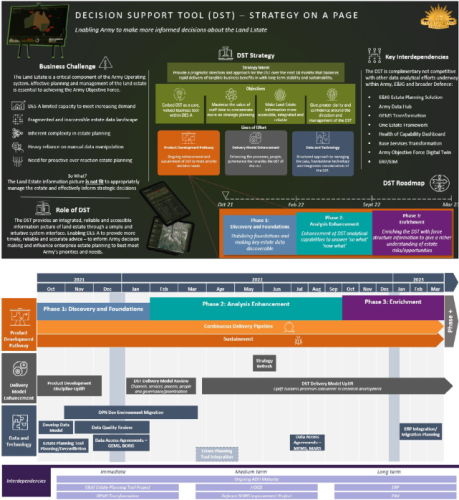
2.3.3 Alignment (Line of Sight)
Fundamentally, the DST provides Army with Line-of-Sight vertically and horizontally across the organisation. In a vertical sense, Army is able to drill-down through Commands, Formations and Units to bases and compounds and can for the first time understand the condition of facilities and infrastructure which contribute to capability.

Of possibly greater importance however, the DST has been developed to provide alignment across the organisational stove pipes. Ingeniously, by linking different sets of enterprise data, the DST is able to provide ‘horizontal line-of-sight’ through multiple lenses. The project view allows capability acquisition projects to make synergies with estate projects focused on upgrade, maintenance and repair (previously never possible). Other views allow risk or financial alignment, where better forecasting or management can create significant efficiencies for Army and Defence.

Fundamentally, the DST allows Army to make data informed capability decisions on its state and Infrastructure.
2.3.4 Assurance
The project team has also worked hard to provide Army with capability assurance through the DST. This is achieved in three ways:
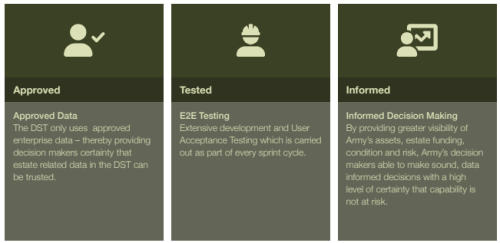
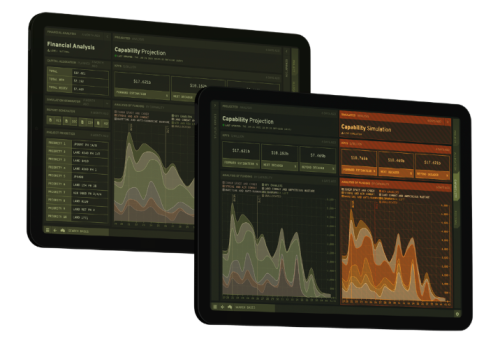
2.4 Information Management The Decision Support Tool (Our Solution)
In response to Army’s challenge, the KPMG team developed an innovative, custom-built information management and data visualisation solution. Behind an impressive, re-usable User Interface, the team has developed a full three-tier (Database, API, UI) capability architecture, which now serves as a template for future Army Data Hub projects.
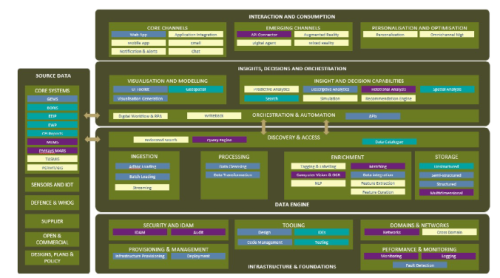
This architecture draws together multiple data sources to derive asset information from different agencies across the Defence organisation. above architecture that the team developed shows all aspects of the data, and how the team developed storage, ingestion and modelling.


Geo-spatial: Users are able to locate facilities and infrastructure anywhere on the Defence Estate, determine its condition, dependencies or forecast funding. Meta data tagged to each facility can be interrogated.

Project, Investment, Budget / Forecast: Users are able to view project spend and investments across Army’s Estate. This helps identify possible funding gaps, peaks or
double-ups where two independent projects could be funding similar facilities adjacent to each other.

Risk to Capability: Users are able to draw links between a particular facility’s health and its impact on resident/dependent units. It allows users to identify redundancy or
visualise how estate health could potentially affect capability. Developing the solution in a manner which meets Defence security requirements and can be hosted on their Network is also a stand-out of the DST. The team have been able to overcome multiple security requirements and data access control requirements to meet this need.
2.5 Project Management
By maintaining a small and flexible project team, KPMG has been able to take the DST from prototype to production in approximately 12 months. Costs have been minimised by multi-skilling project team members and adhering to the project scope and strategy. As an IT heavy undertaking, project methodology has lent itself well to a fairly traditional Agile approach. Sprints are four weeks long and encompass design, development, test and deployment. The development of the Agile strategy and delivery program have also helped with sprint planning and prioritising backlog.

The team structure has remained fairly flexible, and (particularly in the early stages) most team members perform a core role and a secondary/
supporting role. This proved to be an excellent model while the project was small. This kept costs low and ensured a very high level of awareness across the team. As delivery has ramped up, the team size has grown into more specialised Functions.
KPMG’s Contribution Benefit to Army
This project is a leading example of Army’s support to Defence’s “Lead the Way: Defence Transformation Strategy”. This provides the vision and framework for long-term, enterprise-wide transformation which strengthens Army’s ability to work effectively with other organisations and communities in support of broader national goals. For example, in financial year 2020-21, Defence received a departmental budget of around $42 billion. The scale of this investment imposes a critical and binding responsibility on Defence to act as a trusted custodian of national assets. The information within Defence, and the data that is collected, are strategic assets which are fundamental to decision-making, and central to how performance is assessed and ensure that resources are appropriately placed against risks and priorities.
Through direct engagement with the client, KPMG has been responsible for the development of a custom digital solution for Army headquarters. The tool has provided Army with a level of estate insight, alignment and assurance that it has never previously had. This has created significant opportunities for efficiencies across
Army and the wider defence organisation. Army’s estate projects can be more efficiently managed and prioritised without risk to capability.
Geo-spatial and condition views can show under/over investment in certain localities, and visibility of forecasting can help Army determine if such a situation can be accepted. Greater line of sight also provides Army opportunity to synchronise projects and funding lines. An example of this is where a unit might be scheduled for a facility re-fresh (sponsored by Security and Estate Group) and a capability upgrade (sponsored by an acquisition project) a short time later. By being aware of the other project, works can be scheduled better to reduce whole-of-life costs.
Other synergies can also be made where a two projects could work together to provide a better quality ‘shared facility’ rather than two under-utilised facilities side-by-side.
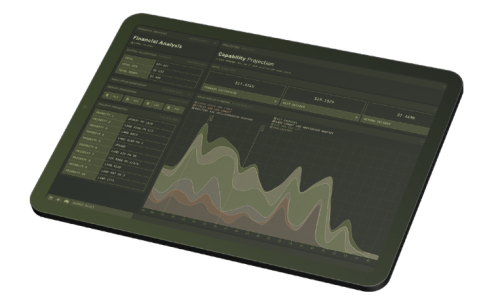
General Comments
Base View Geo-spatial Analysis

Base View Health Analysis

Base View with Schematic Overlay

Project Analysis with Simulation Twin

Forces Command Capability Analysis
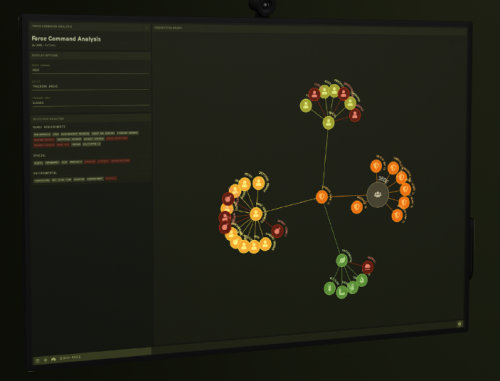
4.3 Future Applications
The DST solution is service agnostic – meaning that it can be applied to any of the Defence Force’s Services and Groups. The Royal Australian Air Force, Royal Australian Navy and Security and Infrastructure Groups have already expressed interest in the DST’s application.
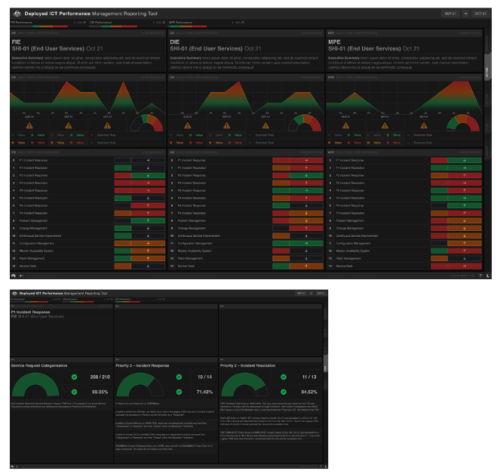
Deployed ICT Performance Management
The DIPMR Tool was built using the LFEP framework, and was stood up in significantly less time than a clean build.


Army Data Hub DDL Generator
The ADH DDL Generator tool was also built using the LFEP Framework and provides rapid designing of SQL data structures while maintaining standards and formatting fundamental to Army’s technical requirements. The tool reduces manual input by approximately 80%.
4.4 The Team
